












|
|
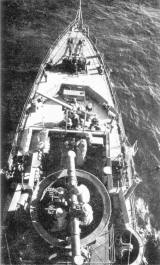
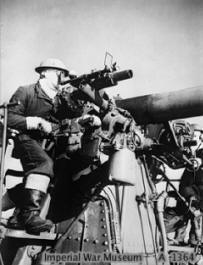
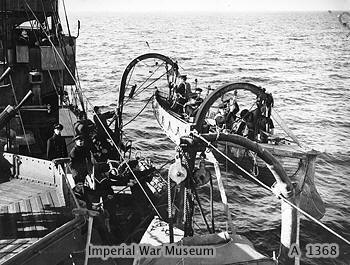
HMS Hazard - view from crows nest, gunlayer and sea boat (IWM
A1364 & A1368)
|
Date of Arrival |
Place |
Date of Departure |
Orders, Remarks etc |
|
In February 1943 HAZARD
sailed back to Iceland and was temporarily based at Seidisfiord for
local duties the first of which was to set Convoy JW53 on its way
(15/2). She remained in Icelandic waters until the end of March when
she and some of her sisters were warned that they would soon join the
Mediterranean 12th M/S Flotilla. |
|
7.2.43 |
Scapa |
15.2.43 |
15/2 From C in C Home
Fleet: HAZARD to remain in Iceland until end of March |
|
15.2.43 |
Scapa |
17.2.43 |
15/2 HAZARD to be part of
western local escort for JW53 for just one day.
17/2 Postponed sailing of
HAZARD until the weather moderates |
|
24.2.43 |
Iceland |
3.3.43 |
|
|
6.3.43 |
Iceland |
22.4.43 |
6/3 HAZARD returned from
search. Quantity of small wreckage seen but no survivors
|
|
|
Then we went up to Govan to dry dock for a few days and we were told
we had only three days. If people could get home and back they could
go, but the biggest part of the crew lived down south and could not
go. Some went to London, it only gave them a few hours home. I was
alright down to Carlisle and across to Newcastle. We had been told we
were off the Arctic run, thank God, and had to get ready with a convoy
for the Mediterranean and Africa. Well that would be a bit warmer for
us.
Scragg |
|
25.4.43 |
Scapa |
25.4.43 |
|
|
27.4.43 |
Greenock |
15.5.43 |
|
|
5.5.43 |
Londonderry |
6.5.43 |
|
|
|
We
left the
Clyde with a new captain on board. We sailed away to the
entrance waiting for the convoy. Some came up from
Liverpool and some from the Clyde, some troopships came with us, and
went around the north of Ireland and out into the Atlantic where the
troopships left us to pick up with a fast convoy with a big escort.
Well we had no trouble and after four days sighted the Rock of
Gibraltar. And before we went into the Med we picked up a large
convoy of ships from America and Canada. We sailed along the North
African coast keeping as close as possible to the land. A German sub
was waiting for us lying right under the cliffs outside Algiers
harbour. They got one ship just in front of us. It looked strange,
all you could see of her was the top of the mast with her balloon
still flying from it. But the convoy sailed on to different parts of
the coast. We carried on to a place called Bone to await for Orders.
We went alongside an American ship filling up with German prisoners
to take to America or England. One of the Americans asked me if we
leaving the next day. He said as soon as they got clear of the
harbour there would be a heavy air raid on the town. Well we got
orders to sail when the American sailed. We had just got clear of
the harbour when it started. The town sure got a bashing and the
harbour went up in flames. I am glad that I came to a Lucky Ship.
Scragg |
|
21.5.43 |
Bone |
24.5.43 |
HAZARD sailed south with
Convoy KKS14 to the Mediterranean where she joined the 17th M/S
Flotilla. |
|
26.5.43 |
Bizerta |
28.5.43 |
|
|
7.6.43 |
Bizerta |
12.6.43 |
|
|
|
We
were on our way to take over from another minesweeper and we passed
her. She had her stern blown off and lost an officer and ten men.
Well we knew what to expect. We joined up with the others clearing a
big minefield off Cape Bon North Africa, and what a field it was. We
kept losing our cutters off the wires and the wires snapping. The
Chief and I were up till nearly midnight every night splicing wires
and up again next morning at daybreak. Now and again we were
disturbed by a plane, German or Italian, but they were soon chased
off by our fighters. Well this minefield took about three weeks to
clear and then we went to Malta.
The first night in we had a raid
and I was glad to be away the next morning, further up the coast to
St Pauls Bay which was the minesweepers base. And every night and
day there were raids. There was hardly a church left standing on the
island, they seemed to take a big dislike at churches. Every now and
again we had to go out to a certain position and wait for one of our
subs to surface and a given time was given and then we escorted her
in to harbour. One day we went around to Sliema harbour where we saw
a lot of activity. We stored ship and oiled. I had an idea that
something big was coming off. Landing craft was getting ready. And
that night we went out and down to the African coast where we picked
the Invasion Fleet up. There was hundreds of ships and landing craft
and escort ships and as we were passing Malta again there was other
ships and landing craft.
Scragg |
|
14.6.43 |
Malta |
? |
6/7 From HEBE: HAZARD in
company, ETA Bark West 1220 |
|
SHARPSHOOTER,
HAZARD and HEBE took part in the build up to, and the execution of,
Operation 'Husky' (the invasion of Sicily). The slow assault convoy (KMS
18) after passing through position 35º00' N, 14º16'E was joined by the
fleet minesweepers HAZARD, SHARPSHOOTER, HEBE and SPEEDY. Paravanes
were to be streamed before reaching the 200 fathom line.
9th July D -1
The weather
deteriorated during the afternoon and considerable swell created
difficult conditions for the LCT convoy, M/S and other small craft in
company. As the speed of the assault convoy had been reduced, sweeping
from the 100 fathom line was dispensed with in order to arrive at the
release position in time. The town of Pachino was observed to be on
fire. The minesweepers cleared the way for the landing craft to go
ashore on the beaches at ‘Bark West’ in the Eastern (British) sector
to the west of Pt de Formiche, the southernmost tip of Sicily.
In the landings on Sicily
115,000 British and Empire troops and more than 66,000 Americans were
landed on the island, starting on 10 July 1943. The minesweepers were
engaged in a variety of escort and despatch duties. Seven days after
the assault, HEBE, HAZARD and SHARPSHOOTER were ordered to Malta where
they arrived on the 18th. |
|
|
The landing on Sicily
- we had to go in
first, the minesweepers, to see if it was safe for them. But we did
not have time to get our sweeps in before the landing craft was in
and on the beaches. There was some firing from the shore but not
much. Before we had got there the paratroopers had landed and the
planes and gliders were coming all along the coast. We landed at the
lighthouse of Cape Passero. Troopships were landing their men and
during that first night our ship had to patrol for subs and while
doing that we had a raid on the ships but none was hit. Every thing
was going to plan. The British and American troops were advancing
north with hardly any resistance. Within no time they were up the east
coast and at Augusta the Army used that harbour for all the store
ships etc. It was a very nice harbour.
Scragg |
|
13.7.43 |
Malta |
13.7.43 |
|
|
17.7.43 |
Tripoli |
17.7.43 |
|
|
18.7.43 |
Malta |
10.8.43 |
|
|
? |
Malta |
19.8.43 |
|
|
22.8.43 |
Malta |
9.9.43 |
|
|
|
The flagship HMS Anson tied up to one of the big buoys and all the
small ships anchored round her. The transport went alongside the
jetties with the soldiers. [10.9.43] One of our ships, a minelayer, the HMS Abdiel,
anchored and switched off her degaussing motors and up she went with
about 200 aboard. She had been sitting over a magnetic mine and as
soon as the motors went off she was magnetized. The next morning the
flagship thought it was better to leave. Our captain made an order
to the Italian harbour police that no boats had to be in the
harbour. And then we started sweeping by magnetic and acoustic and
where the Anson had been up went a mine, one of the biggest I have
seen. The Admiral sent a signal thanking us and to carry on the good
work. We were exploding them four miles in front of the ship and a ¼
mile behind. The Germans had laid about thirty around the harbour
mostly around the buoys. And then our big ships tied up to them and
were allowed to switch off their motors. And we went into the inner
harbour which was their naval dockyard. We went ashore to stretch
our legs for a couple of hours, no longer. We could still hear the
gunfire in the distance.
Scragg |
|
? |
Taranto |
21.10.43 |
HAZARD was present at
Taranto when the Italian fleet surrendered and sailed for Malta. |
|
|
We had orders to go back to Malta. Some of the Med Fleet had to go up
to the Gulf of Taranto and await for the surrender of the Italian
Fleet. They came down one channel as we went up with another sweeper,
sweeping a new channel for our ships which we marked.
Scragg |
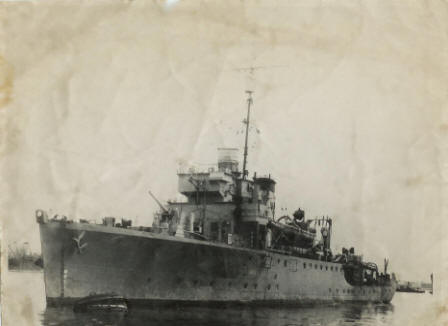
HMS Hazard in the Mediterranean
(Source: Tibbs Halford)
|
22.10.43 |
Bari |
24.10.43 |
|
|
|
Our
troops were well up into Italy by now. So we had to go across to
Bari
up into the Adriatic. We had to make a channel wide and safe for our
ships coming up with stores etc. We swept from Brindisi up to
Manfredonia and back and came into the harbour at Bari. We were
ready next morning to go out but we were well overdue for a boiler
clean and the Sharpshooter and the Hebe our sister ships went out in
our place. But [on 22nd November] the Hebe blew up on the way into harbour, it was she
who had taken our place. So you see I was on a lucky ship and when
we had finished the boiler clean we went out with the Sharpshooter
and started sweeping from Bari and Brindisi and right up to Manfredonia and back to Bari.
Scragg |
|
25.10.43 |
Bari |
1.11.43 |
|
|
3.11.43 |
Malta |
5.11.43 |
|
|
? |
Bari |
13.11.43 |
|
|
2.12.43 |
We had only got into the harbour and
told to anchor. That was at 3.30 pm and at 4.00 pm we were told to
go and tie up stern first to the jetty by the main dockyard gate.
And after tea I got ready for a trip ashore. And while I was passing
the American Radar Station I heard them say it had broken down and I
said to myself hope there is no raid tonight as there was a big
convoy of ships coming in to the harbour. When we came ashore it was
supplies that they were waiting for the big push up into Italy.
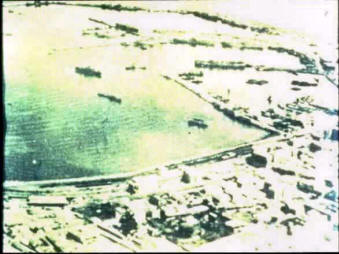
Well
at
6.30 pm we went into the canteen which was part of the Railway
Men’s Club and Pictures next door. The pictures were full of
Italians. And then it all started. The German planes got in without
being heard with the radar being broken down. I thought the world
had come to an end, an explosion blew the big window in on top of
me. My pals had to dig me out and on the way out of the building
women and children were crying and screaming. The side of the
Picture Hall had opened up about six foot gap and half the roof had
come in on top of them. I said to my mate to go into the country
till the raid was over, the Italians following us and then the ‘all
clear’ went so I said back to the ship to see if it was still there.
On the way back you have never seen anything like it. Houses with no
roofs, doors and windows and bodies lying all over the place.
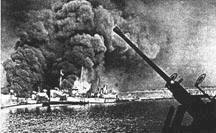
The
harbour was on fire from one end to the other, ships burning and
sinking. We couldn’t find the dockyard gates for smoke and I was
calling out for the Hazard when I heard a faint voice calling ‘Is
that you John’. It was the second in command, Commander Crawford. He
said I would have to find a plank of wood to get back on the ship as
the gangway had blown away with the explosion. I went straight down
below to get changed but brought my working clothes into the
passageway. And while I was putting my overalls on there was another
explosion. Another ammunition ship had blown up. It lifted me up
against the wall about five feet and it blinded me for quite a
while. The captain sent for me to slip the cables, after I had
marked them by a float, and get out of the harbour a fast as we
could. The HMS Sharpshooter had lost her mast. A big steel plate had
chopped it off coming down through the air.
It took the ship half
and hour to get out instead of four minutes. The spot where we had
anchored at 3.30, the ship there was on the bottom. The captain gave
orders for everybody to get below the water line as the ship that
was on fire, the ammunition on the bridges were exploding and the
shells were shooting all over the place. Quite a few came through
the side of the ship. We put out of the harbour and started
patrolling up and down with the other ship, and looking ashore at
the town of
Bari
it was an inferno. Burned for a whole week and at daybreak we were
told to go into the harbour back to our old place stern on to the
wall. And what a sight, 17 ships on the bottom, there were only
three of us that got away with it. The other one couldn’t get out
she had to stay alongside of the jetty.
When we got back to the
jetty the other 42 members of our crew that went ashore with us was
standing there in survivor’s kit. They thought the ship had gone
down. You should of heard the captain tell them what he thought of
them, and told them that two members had come back to the ship to
see if their shipmates were ok. He told them the first chance of
getting rid of them he would and he did. We buried hundreds of dead
every day for a week. And when Monty heard of all this he went mad,
it was for his Big Push.
Scragg
[See also
historynet.com for a detailed account of this significant raid.
One of the ships contained 100 tons of mustard gas and 1,000 sailors and
over 1,000 civilians
were killed. Many at first appeared unhurt but were killed by the gas.] |
|
|
As the minesweeper moved back to her berth, Robert Forrest recalls
many bodies floating in the water. When the captain saw them, he
ordered duty watch to retrieve the corpses. 'There were sailors,
soldiers and Italian civilians all covered in a black mess. We pulled
them from the dirty, yellow water, placed them on stretchers covered
with a Union flag and took them ashore to be transported to a communal
grave.'He says
of the burials, 'The road along which the tragic procession wound its
way was flanked by hundreds of Italians, mostly women, sobbing and
praying at the sight they were witnessing.'
(Poisonous Inferno - George Southern) |
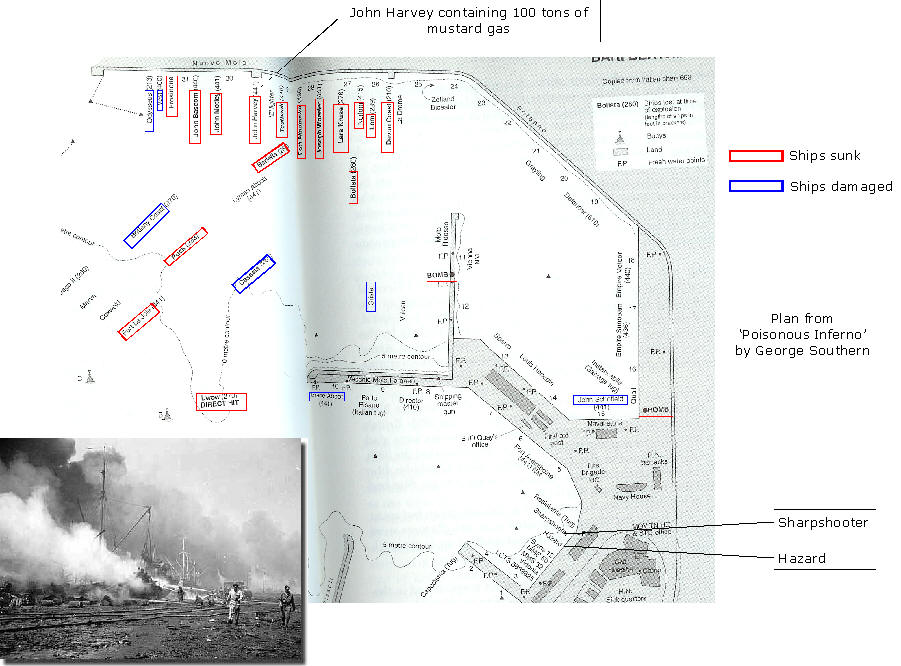
|
5.12.43 |
Bari |
21.12.43 |
|
|
22.12.43 |
Taranto |
8.1.44 |
Well
after another few days we went around to Taranto for a small docking
and was there for Xmas 1944. On Christmas morning news came through
that the captain had got the DSC. The second in command and myself
got mentioned in Despatches for the job in clearing the big
minefield off North Africa. Nearly all captains and officers in
other minesweepers got rewarded. We had a celebration a few drinks
and after the New Year we were sent down to Alexandria and went on a
few more convoys to
Augusta
and back and then went to Famagusta in Cyprus with stores.
Scragg |
|

